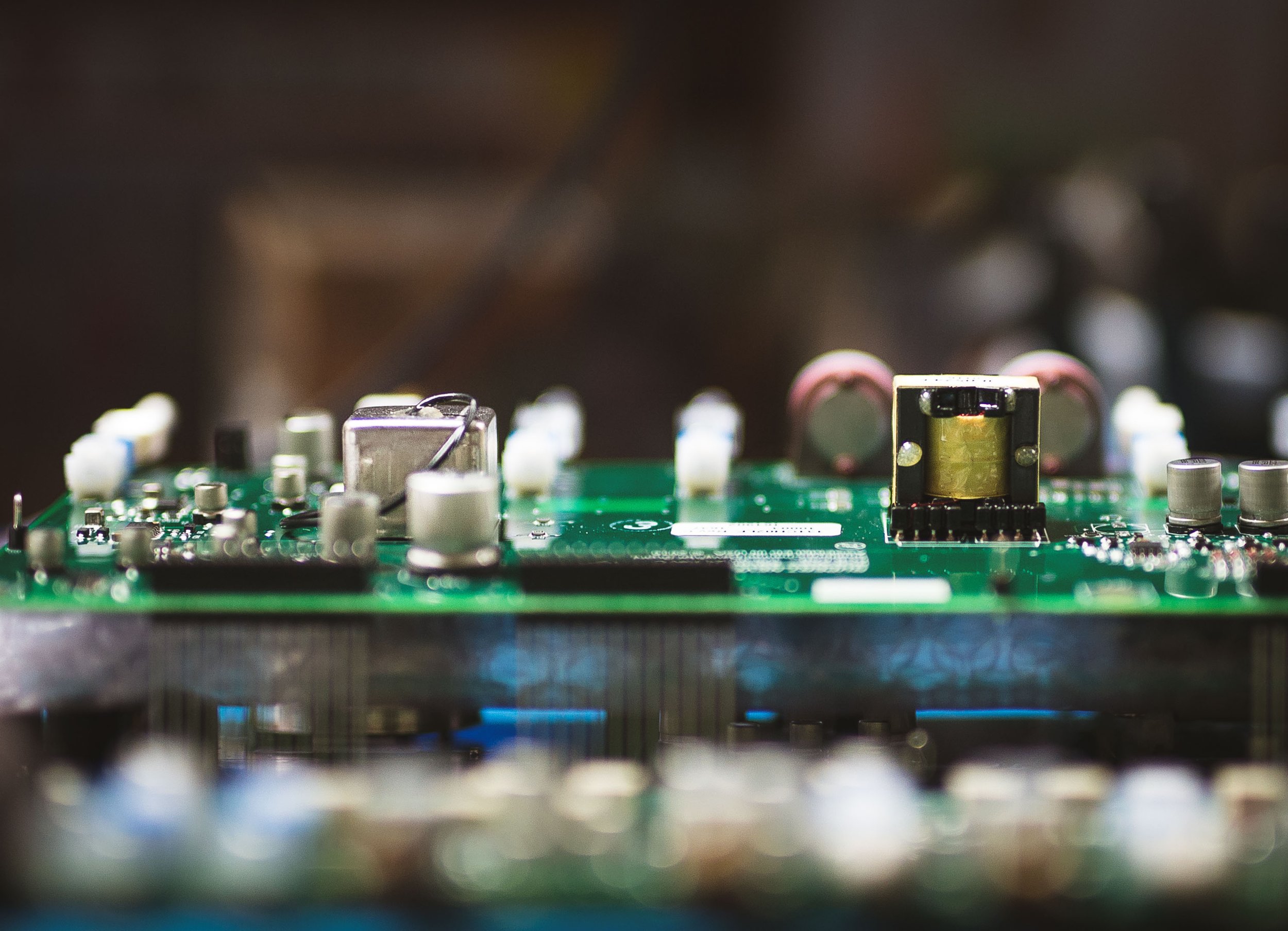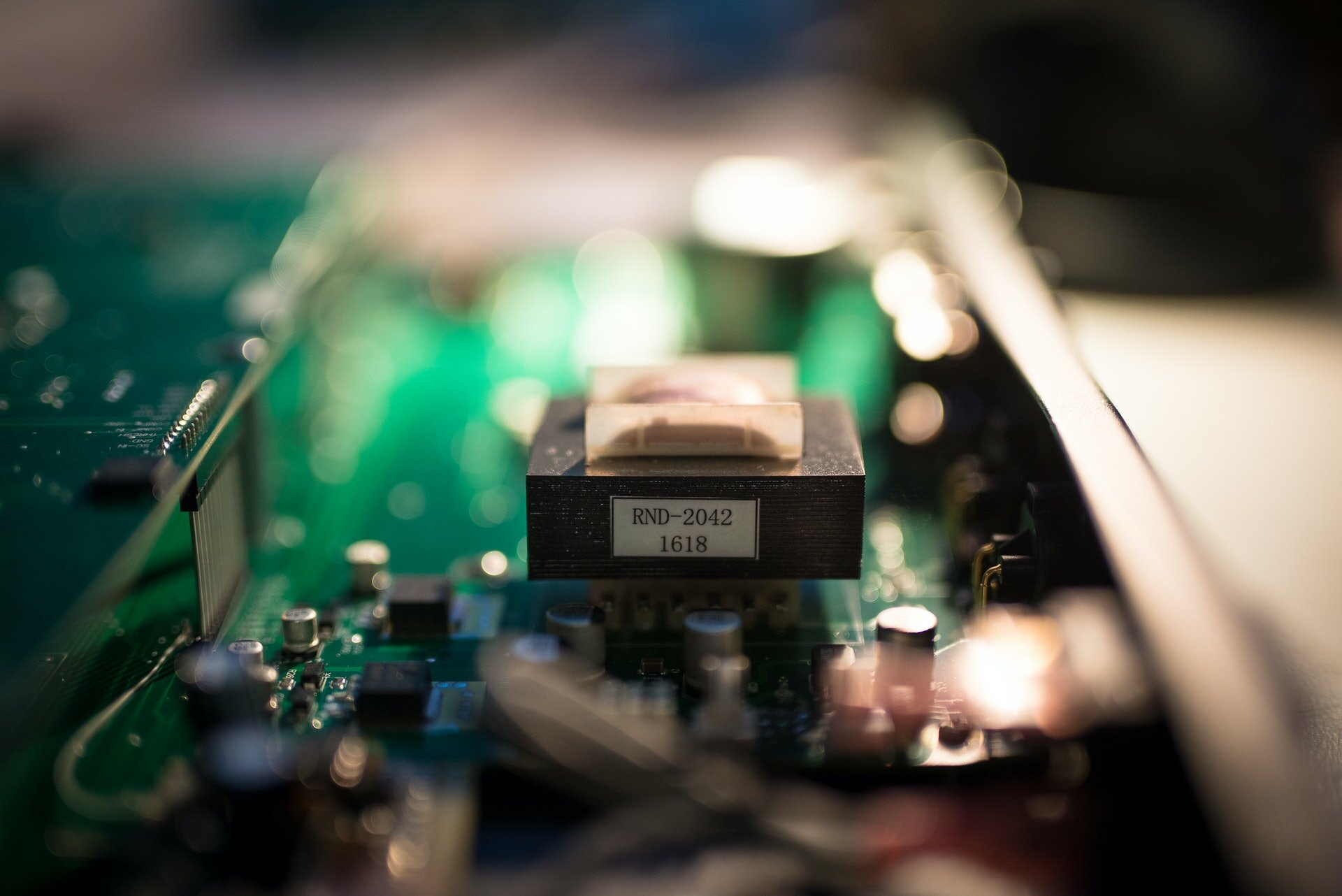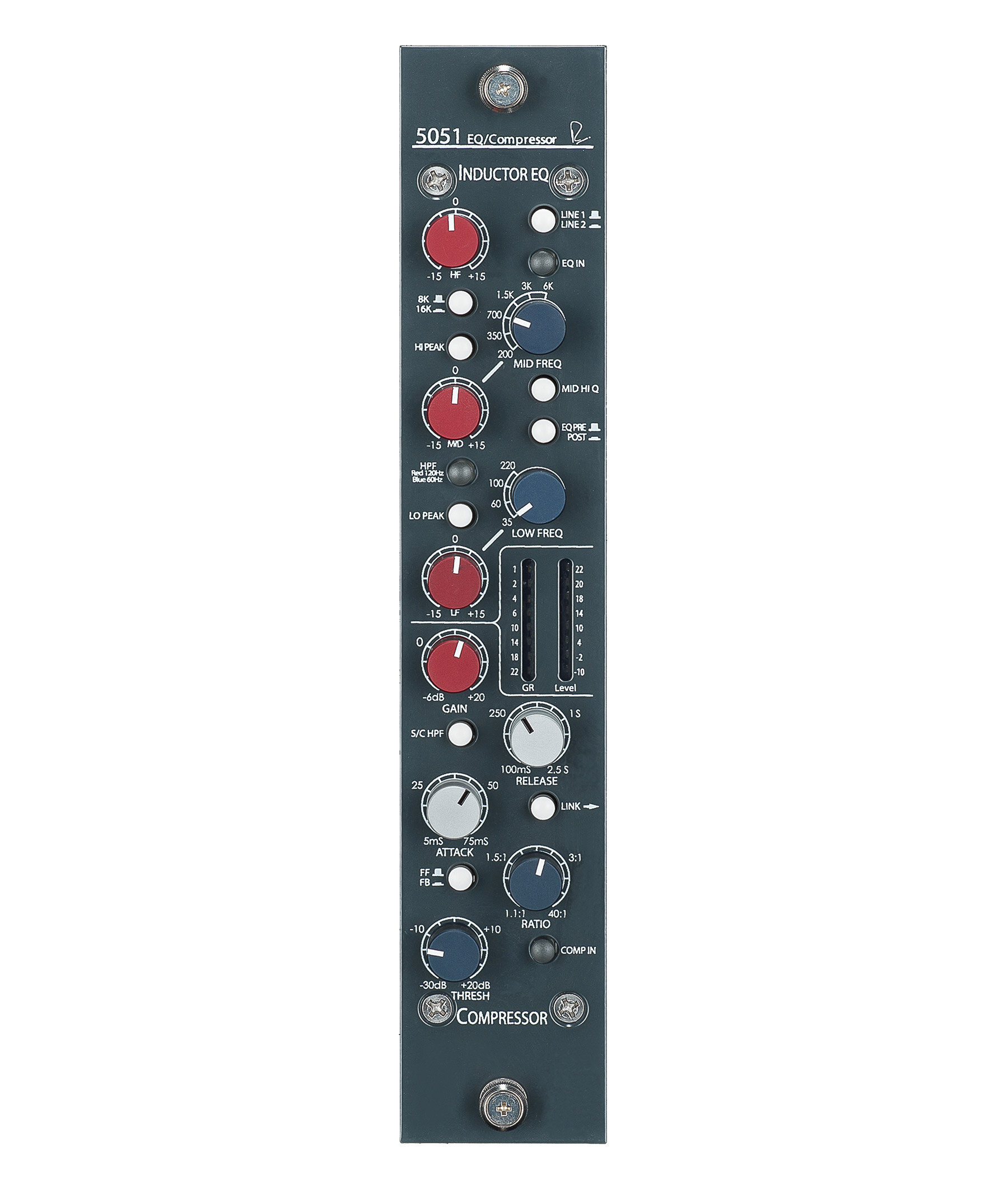
SHELFORD 5053
Transformer Gain Mic Pre / Inductor EQ
Legendary Vintage Tone, No Compromises.
Building upon the massive success of both the vertical Shelford 5052 Penthouse module and the rack-mount Shelford Channel, the Shelford 5053 Penthouse module provides 5088 clients with a sonic imprint that more closely resembles Rupert Neve’s iconic, vintage consoles.
By incorporating an additional custom Rupert Neve Designs transformer – which specifically provides the first 15dB of mic pre gain – into the input stage, the 5053 input section is now virtually identical to the wildly popular Shelford Channel, allowing the 5088 to achieve new levels of rich, vintage-style coloration.
Designed to the same +/- 24V power spec as the 5051 and 5052 Penthouse Modules, the 5053 can populate an entire 5088 console or be mixed and matched with other Penthouse Modules to provide a versatile combination of flavors suitable for literally any source.
Transformer Gain Mic Pre
The Shelford mic pre was designed using Rupert’s classic direct-coupled transformer gain topology, where the first 15 dB of gain is provided by the custom RND transformer. This, in combination with fully class-A amplifiers, creates the 5053’s bold and instantly recognizable character.
The mic pre section also includes a sweepable 20-250Hz high-pass filter, Mic / Line selection, 48V phantom power, and polarity reverse.
The custom-designed mic input transformer on the front-end of the Shelford Channel and 5053.
“Best of the Classics” EQ
The 3-band inductor EQ on the Shelford 5053 was inspired by our favorite aspects of Rupert’s vintage EQ designs. Each EQ band uses low-feedback, class-A electronics to maintain a sweet, musical sound with virtually any setting.
As with Rupert’s most prized classic designs, each EQ section uses low-feedback, class-A discrete electronics to prevent low-level artifacts and harshness from detracting from the tonal shaping. However, this new circuit is a decidedly modern design with updated techniques and components that were simply not available 50 years ago, and is definitely not a “clone”.
THE LOW BAND
Designed to produce a creamy, resonant bass response similar to a vintage 1064 – but unlike the vintage modules, the LF band on the 5053 can be used as either a shelf or a peak filter, adding punch, dimension, and control to your low end.
THE MID BAND
Based on that of the 1073, ideal for sweetening vocals and instruments while bringing them forward in a mix, and its proportional “Q” response makes it well-suited for minimizing problematic frequencies.
THE HIGH BAND
A hybrid vintage / modern design, blending inductor circuitry with capacitor-based topologies to achieve vintage tones with enhanced control.

What is an inductor?
While it is certainly possible to create a functioning EQ using off-the-shelf inductors, we choose to use our own custom inductors for the 5053. This attention to detail in controlling variables such as the winding and core materials in relation to the surrounding circuitry allows the 5053 to capture the vitality and personality of Rupert’s classic designs.
Inductors are wires wound around a coil that provide a form of frequency-dependant resistance. When they saturate, they bring out beautifully musical harmonics that give your tracks the smooth, polished sound that has made Rupert’s consoles and equipment so desirable for over fifty years. This is what sets them apart from capacitor-based EQ designs, which excel at more surgical equalization. We use inductors to capture THAT tone.
Transformer Output with Silk & Texture Controls
The custom RND output transformer in the 5053 features the Silk Red / Blue and Texture controls to precisely tailor the harmonic content and tonality of the output stage. Pushing the Silk button cycles the Silk modes from Red to Blue to OFF. The SILK Texture control adds harmonic content as the texture value is increased. Red Silk accentuates the musical harmonic saturation in the mid and high frequencies, while Blue Silk accentuates harmonics in the low and low-mid frequencies.
By manipulating the Texture control, the amount of Silk can be changed from essentially absent, to roughly 4-5% THD (mostly second order) depending on how hard the output transformer is being driven. This gives 5053 users total control over dialing in a classic, vintage or modern sound.
MIC / LINE
Push-button switch that selects the mic input or the line input.
TRIM
Center-detent potentiometer that controls the input trim within a range of +/- 6 dB.
+48V
Illuminated push-button switch that engages 48V Phantom Power
POLARITY
Illuminated push-button switch that inverts the phase of the input signal
MIC GAIN
12-position rotary switch that controls the mic preamp gain in 6 dB steps
LEVEL METER
8-segment LED meter that displays output level in dBu pre-SILK
HIGH PASS FILTER
Continuously variable potentiometer (engaged with the HPF push-button switch) that controls the cutoff frequency of the high pass filter within a range of 20 Hz to 250 Hz.
HF
Center-detent potentiometer that controls the amount of boost or cut for the high frequency shelf/peak EQ within a range of +/- 15 dB
8k/16k
Push-button switch that toggles between the two HF frequencies, 8k and 16k
HF PEAK
Push-button switch that toggles between shelf mode (out) and peak mode (in)
MID FREQ
6-position rotary switch that selects the center (peak) frequency
MID
Center-detent potentiometer that controls the amount of boost or cut for the mid frequency peak EQ within a range of +/- 15 dB
MID HI Q
Push-button switch that reduces the Q width when pressed in
EQ IN
Illuminated push-button switch that engages the EQ section
LOW FREQ
4-position rotary switch that selects the center (peak) or corner (shelf) frequency
LF
Center-detent potentiometer that controls the amount of boost or cut for the low frequency shelf/peak EQ within a range of +/- 15 dB
LF PEAK
Push-button switch that toggles between shelf mode (out) and peak mode (in)
SILK
Illuminated push-button switch that toggles through the three available SILK modes: OFF, RED & BLUE
TEXTURE
Continuously variable potentiometer that controls the amount of SILK harmonics when SILK is engaged

SPECIFICATIONS & DOWNLOADS
MIC PRE
Input Impedance
2200 ohms
Frequency response
30dB gain, +4dBu out, 150-ohm source impedance
+/-0.2dB, below 5Hz-50kHz
Noise 22Hz-22kHz
@ unity -101dBu
@ 30 dB gain -94dBu
@ 66dB gain -61dBu
EIN 22Hz-22kHz, unweighted
@ 30dB gain, -124dBu
Maximum input level
+24dBu @ 1kHz
+6dBu, 22Hz-22kHz
THD + Noise, 1kHz @+4dBu out w/30dB Gain:
0.002% typical
LINE INPUT
Input Impedance
10 kohms
Frequency Response
+/- 0.1dB, 16Hz-34kHz
+/-0.5dB, 7Hz-90kHz
Noise 22Hz -22kHz
-102dBu
Maximum input level @ 1kHz
+26.3dBu
THD + Noise, 1kHz @+4dBu
Better than 0.002% typical
EQ
High Frequency:
+/- 15dB, center frequency selectable 8kHz / 16kHz
Selectable peak/shelf modes
Inductor based Mid Frequency:
+/-15dB, center frequency selectable 200Hz, 350Hz, 700Hz, 1.5kHz, 3kHz, 6kHz (+/-10%)
Mid Hi Q selectable option
Low Frequency:
+/- 15dB, center frequency selectable 35Hz, 60Hz, 100Hz, 220Hz
Selectable peak/shelf modes
OUTPUT STAGE SILK MODE
Selectable RED/BLUE Silk modes
Continuously variable Silk Texture control
UNIT DIMENSIONS
1.75” W x 8.75” D x 9.4” H
(4.5 cm W x 22.2 cm D x 23.9 cm H)
UNIT WEIGHT
3.5 lbs. (1.6 kg)
SHIPPING DIMENSIONS
14” W x 14” D x 7” H
(35.6 cm W x 35.6 cm D x 17.8 cm H)
SHIPPING WEIGHT
6 lbs. (2.7 kg)
FREQUENTLY ASKED QUESTIONS
The Shelford Channel, 5053, 5052, and 551 EQ for 500 Series use essentially the same inductor EQ design, but some of the surrounding circuitry is different.
Yes, this is normal. When the frequency positions are changed, the switch momentarily breaks the connection in the audio path, which can cause a click. (Note: how much of a click or pop you hear may also be dependent on the source material, as well as the amount of boosting you’re doing with the control). On the LF band, you may also hear a slight mechanical click from inside the unit itself. That’s the sound of relays switching to change the frequency selection.












